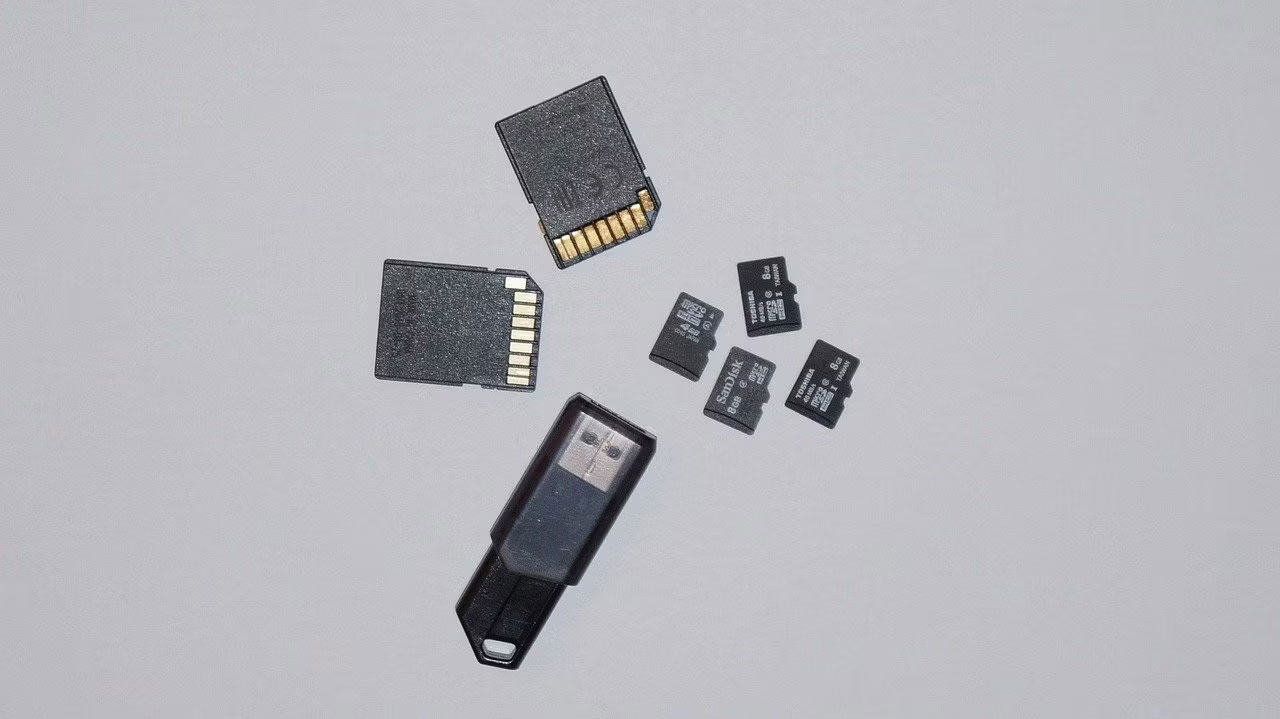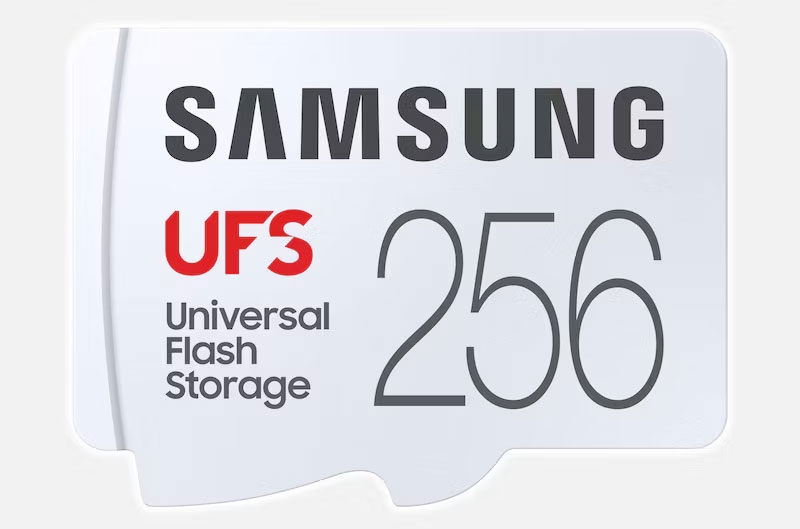What is a TF card? How is it different from a microSD card?
When it comes to memory cards, there are a lot of different options on the market for different devices.
But what exactly is a TF card and is it different from a microSD card?
What is TF card?
TF card stands for TransFlash card. Motorola and SanDisk introduced this type of external storage card in 2004 as a competitor to SD cards. As you may know, SD cards are memory cards used in early digital cameras and other devices that require removable storage. While SD cards were the standard back then, they were bulky and had slower write speeds than newer generations.
TF cards were developed to be smaller, more compact, and faster than SD cards while retaining the same functionality. That means you can use a TF card in a digital camera, Steam Deck, or any gadget that uses an SD card by using an SD card adapter. So, to expand your storage, try any of the fastest microSD cards.
What is a MicroSD card?
microSD cards are TF cards by another name. In 2004, when Motorola and SanDisk released TF cards, it was launched as a separate standalone product. Aside from the fact that TF cards support the same standard specifications as SD cards (except for size), TF cards are a separate, non-standardized product category.
So, to standardize these flash memory cards, the SD Association adopted TF card as microSD card in late 2004. Therefore, microSD card is TF card with another name.
What is the difference between TF card and microSD card?

There is no difference between a TF card and a microSD card. You can use both interchangeably. For example, if you happen to have a TF card but your smartphone only supports microSD cards, you can use your TF card. It will work seamlessly because it supports the same standard – there is no specific TF card slot.
Additionally, searching for TF cards on consumer sites like Amazon will return results for microSD cards. However, there are still common mistakes to avoid when buying microSD cards online.
What about UFS cards?

UFS cards are a much newer development in memory card technology. First introduced in 2011, Universal Flash Storage (UFS) cards offer higher performance and faster data transfers than SD/microSD cards, and are a great option for those with higher demands. They are especially useful for mobile devices and cameras, offering higher read and write speeds.
The only real downside to UFS is that it requires a different interface. You can't just buy a UFS card for your microSD device; it just won't work. Thankfully, some high-end tech supports UFS. Most Samsung devices released since 2020, for example, have UFS slots, while some OnePlus smartphones can use UFS cards.
You'll need to check whether a given device supports the faster UFS card standard before purchasing.
You should read it
- What is the maximum SD card capacity that can be achieved?
- Gun shot without puncturing Apple Card, new credit card from Apple
- Xiaomi invented the SIM and two-in-one memory cards
- List of the best graphics cards according to the price segment
- How to Repair a Corrupted Memory Card
- Summary of compelling PC games without a separate video card
- Instructions for creating Business Card in Photoshop
- Nano memory card memory card, solution for smartphones not equipped with memory card slot
May be interested
- How to Remove Write Protection on a Transcend microSD Card
 have you ever received an error message about whether the memory card is in write-protected or read-only mode when copying data to the card? this error can interfere with editing and moving important files, making it difficult to perform tasks on the microsd card. fortunately, there are many different solutions for you to deal with this problem, ranging from simple to complex. today's tipsmake will show you how to fix the error that reads and writes data only to the transcend microsd card.
have you ever received an error message about whether the memory card is in write-protected or read-only mode when copying data to the card? this error can interfere with editing and moving important files, making it difficult to perform tasks on the microsd card. fortunately, there are many different solutions for you to deal with this problem, ranging from simple to complex. today's tipsmake will show you how to fix the error that reads and writes data only to the transcend microsd card. - Samsung launches new 256GB SD Express microSD memory card, supporting 800MB/s read speed
 in a press release, samsung revealed that it has begun production of 256gb microsd memory card products based on the sd express standard, also the company's first line of microsd memory cards to support this standard.
in a press release, samsung revealed that it has begun production of 256gb microsd memory card products based on the sd express standard, also the company's first line of microsd memory cards to support this standard. - Experience the feeling of holding 400GB of data on your fingertips
 many technological items - from a pc with an 18-core processor to a super-sized vr headset - will be presented at the ifa event in berlin, germany. but maybe a few items match the sandisk 400gb microsd card.
many technological items - from a pc with an 18-core processor to a super-sized vr headset - will be presented at the ifa event in berlin, germany. but maybe a few items match the sandisk 400gb microsd card. - Storage drop brakes with new microSD memory card of Integral Memory 512GB capacity
 if 400gb is still not enough, integral memory has recently announced it will release a 512gb microsd card.
if 400gb is still not enough, integral memory has recently announced it will release a 512gb microsd card. - What is microSD Express memory card?
 performance is always a problem with memory cards and microsd express promises to make memory cards much faster. so what is it, why is it faster than other cards? let's find out in the following article.
performance is always a problem with memory cards and microsd express promises to make memory cards much faster. so what is it, why is it faster than other cards? let's find out in the following article. - SanDisk sold the world's first 1 TB microSD memory card, costing more than VND 10 million
 the world's first 1 tb microsd memory card was marketed by sandisk for the same price as an ipad air or iphone 8 plus.
the world's first 1 tb microsd memory card was marketed by sandisk for the same price as an ipad air or iphone 8 plus. - 3 ways to increase storage capacity on Android with a microSD card
 many android phones have very little storage, in which the operating system has up to 6gb. however, android 6.0 mashmallow or newer phones can increase memory capacity by using microsd cards.
many android phones have very little storage, in which the operating system has up to 6gb. however, android 6.0 mashmallow or newer phones can increase memory capacity by using microsd cards. - Nano memory card memory card, solution for smartphones not equipped with memory card slot
 at the launch of the mate 20 smartphone launch in london, huawei mate introduced a new enhancement to storage memory. it is nano memory card, memory card in the format of a nano-sim card, with a capacity of up to 256gb.
at the launch of the mate 20 smartphone launch in london, huawei mate introduced a new enhancement to storage memory. it is nano memory card, memory card in the format of a nano-sim card, with a capacity of up to 256gb. - Things to know about Samsung Galaxy Note 7 microSD memory card
 on the samsung galaxy note 7 series, microsd expansion card also has a lot of changes compared to the previous lines, besides other familiar features.
on the samsung galaxy note 7 series, microsd expansion card also has a lot of changes compared to the previous lines, besides other familiar features. - The 5 best microSD cards for Steam Deck
 having a good quality microsd card is essential to expanding the storage capacity on your steam deck.
having a good quality microsd card is essential to expanding the storage capacity on your steam deck.










 Fun Alexa Games You Can Play on Amazon Echo
Fun Alexa Games You Can Play on Amazon Echo How to Increase Video Quality on Media.io Video Enhancer
How to Increase Video Quality on Media.io Video Enhancer If you have an AMD CPU, install this important security update!
If you have an AMD CPU, install this important security update! 3 Ways to Turn Off Voicemail on iPhone
3 Ways to Turn Off Voicemail on iPhone AMD Ryzen Master stops supporting Threadripper and Ryzen 1st and 2nd generation CPUs, users take note!
AMD Ryzen Master stops supporting Threadripper and Ryzen 1st and 2nd generation CPUs, users take note!